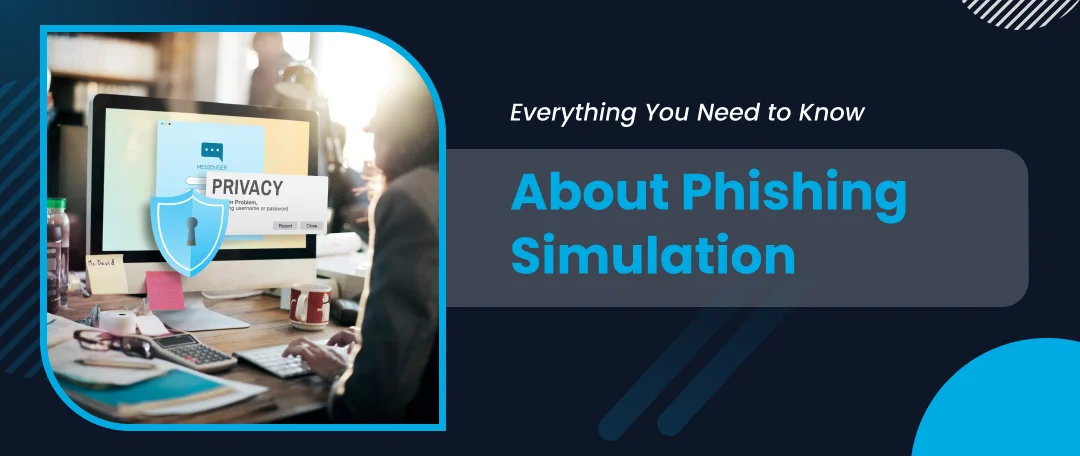Meta Description: Learn how phishing simulation training can help MSPs educate clients, reduce cyber risks, and improve employee awareness.
If we go back a few years, cyber threats were quite basic, and individuals could easily identify suspicious links or emails. However, today cybercriminals are sophisticated, and their methods are highly advanced. One of the most common cyber threats is phishing, in which attackers trick individuals into sharing confidential information.
For a question that says how businesses can protect themselves from such disguised threats, the answer is simple: simulate to educate on phishing. By running phishing simulations, your clients can easily train employees to recognize and avoid cyber threats before they cause harm.
Let’s discuss further what phishing simulation is, how it works, and why it’s important for your Managed Service Providing Company to offer ClipTraining’s phishing simulation training to your clients.
What is Phishing?
Your clients can’t possibly understand the importance of simulation unless they know what phishing is. In its most basic form, phishing is a type of cyberattack in which scammers pretend to be a trustworthy person or organization and try to steal personal information, such as passwords, credit card numbers, or company data.
This is a serious threat to both individuals and businesses, that’s why it is important to recognize and avoid these scams.
Following are the types of phishing attacks:
1. Email Phishing:
At first attackers will send individuals fake emails that look like they are from authorized companies, and force them to click on suspicious links or share personal details. These emails often contain urgent messages, such as suspension warnings or payment failures, to trick them into acting quickly.
2. Spear Phishing:
This is a more targeted form of phishing where attackers research their victims and send them highly personalized messages to trick them. This method is particularly dangerous because it can bypass traditional security measures by appearing highly credible.
3. Smishing (SMS Phishing):
By this technique attackers use text messages to send the victims some fraudulent links. These messages often claim to be from banks, delivery services, or government agencies, and urge them to click a link and enter sensitive information.
4. Vishing (Voice Phishing):
Scammers call an individual and pretend to be from banks, government agencies, or IT departments to obtain sensitive data. They also use AI for deepfake and could create a sense of urgency, so as to convince them to share personal details over the phone.
How Do Phishing Attacks Work?
Phishing attacks are well-planned and carefully executed. Here are some of the ways how phishing attacks works:
- At first the attacker selects a target and gathers publicly available information about them and their company. Then they research employees, business contacts, or company structures to create believable messages.
- Next, they craft a convincing email, message, or call for the target that appears authorized and builds trust. These messages often mimic well-known brands, colleagues, or service providers.
- The message is then sent to the target, urging them to take immediate action, such as clicking a link, downloading an attachment, or providing login credentials.
- If the target falls for it, the attacker gains access to their sensitive information, which leads to data breaches or financial losses. This can result in stolen identities, compromised business data, or fraudulent transactions.
- Now, the attacker uses the stolen information to commit fraud, steal money, or compromise business operations. Due to this, an organization can also face legal penalties, reputational damage, and financial setbacks.
What is Phishing Simulation Training?
Since phishing attacks are so deceptive, businesses need to prepare their employees to recognize them. The best way to educate them on phishing is via simulation.
Phishing simulation is a controlled training method where your clients can send fake phishing emails to their employees to test their awareness. These emails mimic real phishing attempts, which helps employees identify warning signs and avoid falling for scams. These simulated attacks are repeated monthly or weekly, so that employees can develop a keen eye for detecting cyber threats in real-life situations.
How Phishing Simulation Training Works?
Phishing simulation training work in a structured manner to educate employees on recognizing cyber threats. Let’s take a look at how phishing simulation works:
1. Creating Realistic Phishing Emails
The company or a cybersecurity training provider, like ClipTraining, creates fake phishing emails resembling real threats for employees. These emails are especially designed to look like common phishing attempts, which makes the training highly effective.
2. Sending Emails to Employees
These emails are sent to employees randomly without prior notice, so as to make the experience as real as possible. This helps employees practice their ability to detect phishing attempts under real-world conditions.
3. Tracking Employee Responses
The simulation records which employees open the email, click the links, or provide sensitive information. This data helps the company to identify areas whether additional training is needed or not.
4. Providing Immediate Feedback
If an employee falls for the fake phishing email, they receive an immediate alert, explaining the mistake and how to avoid such attacks in the future. This feedback reinforces learning and helps employees improve their cyber awareness.
5. Ongoing Training and Reports
Regular phishing simulations help employees stay aware, and your clients can easily track improvements through reports and analytics. You can also use this data to refine their cybersecurity training programs and improve overall security posture.
Simulated phishing exercises provide employees with hands-on experience in detecting and avoiding phishing attacks before they cause harm. – SANS Institute
Why Should Businesses Educate on Phishing Simulation Training?
No matter how advanced cybersecurity tools become, human error remains the weakest link. Employees who are unaware of phishing tactics can unintentionally put an entire organization at risk. This is why simulation to educate on phishing is crucial.
Here’s why businesses should use simulate to educate employees:
1. Boosts Employee Awareness:
With simulated training, employees will learn how to recognize phishing attempts and take action accordingly, reducing the chances of falling victim to scams.
2. Reduces Risk of Data Breaches:
A well-trained workforce ultimately translates into fewer chances of successful phishing attacks and protecting sensitive business information from cybercriminals.
3. Enhances Compliance:
Many industries require cybersecurity training as part of compliance regulations. Phishing training simulations will ensure the company meets these requirements efficiently.
4. Prepares for Real Attacks:
Simulations used to educate on phishing attacks, which prepares employees for real cyber threats without any actual harm, making them more experienced in handling suspicious emails and messages.
5. Cost-Effective Security Measure:
Training employees through simulation is far cheaper than dealing with a cybersecurity breach, which can result in thousands of dollars of financial losses, reputational damage, and legal consequences.
Organizations that conduct regular phishing simulations see a significant reduction in employees falling for real phishing attacks. – (CISA)
The study Understanding Phishing Threats highlights key insights into how phishing attacks evolve and how individuals can better recognize and prevent them.
Common Mistakes to Avoid in Simulation Training
Using simulation to educate on phishing can be a life savior for cybersecurity awareness, but only if it is done right. Some common mistakes can make the training ineffective or even backfire, leaving your client frustrated instead of educated.
Let’s have a look at those common errors below:
1. Making Simulations Too Easy:
If the phishing emails are too obvious, like an email from “Mr. Hacker” asking for a password, employees will catch on quickly, but they won’t take the training seriously. Real phishing attacks are sneaky, so simulations should be, too.
2. Punishing Employees for Failing:
The whole point of simulation training is to teach, not to shame. If employees feel like they’ll get in trouble for clicking a bad link, they might start hiding their mistakes instead of learning from them.
3. Running Simulations Without Follow-Up Training:
Just sending out fake phishing emails isn’t enough. If employees fall for a phishing simulation, they need to know why they fell for it and how to spot similar scams in the future. Without proper follow-up training, people won’t improve, and the same mistakes will keep happening.
4. Using the Same Templates Over and Over:
If employees see the same phishing email format every time, they’ll start recognizing it easily, but that doesn’t mean they’re prepared for real threats. Cybercriminals are constantly changing tactics, so simulations should do the same. Mix things up to keep employees on their toes.
5. Ignoring Analytics and Reporting:
A phishing simulation is only useful if your clients actually track the results. Are employees clicking on links? Are they entering credentials? Are certain departments more vulnerable than others?
If the clients are not analyzing the data and adjusting their approach, they’re missing out on valuable insights that could strengthen their security. ClipTraining helps them do all of that, and more with your help
How ClipTraining Can Help Simulate to Educate on Phishing
ClipTraining offers a powerful phishing simulation training platform so MSPs can help businesses train their employees effectively. Our phishing training is designed to be engaging, practical, and impactful.
All you have to do is check out our website, and our team will take care of the rest. We provide a comprehensive training platform for managed service providers like you so your clients can be satisfied, and thriving!
The Takeaways
Phishing is a growing cyber threat that no business can afford to ignore. But the good news is, with the help of ClipTraining, your clients can always leverage simulation training and help their employees recognize and avoid cyber threats.
Book a demo with Clip Training today to see how our phishing simulation training can help your business grow!


